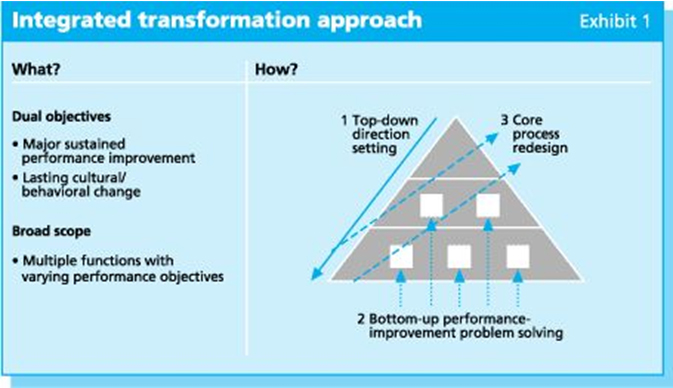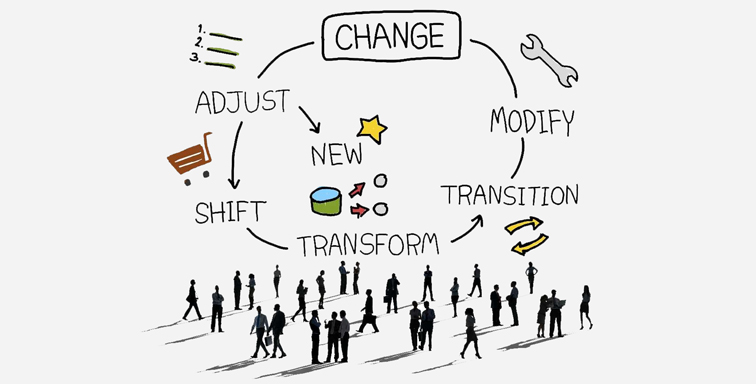Many senior managers are aggressively trying to transform their companies, by seeking to radically improve performance through changing behaviour and capabilities throughout the organisation. Unfortunately, most leadership groups lack a proven way of thinking about the challenge.
Ask your management team what a good business plan looks like, and you will probably find close agreement. Ask them what a good change plan should include, and opinions will vary all over the map. The chaos of opinion this creates, if left unresolved, can prevent the kind of meaningful discussion that keeps a management group pulling together toward a common end. The CEO of a company facing transformational change must be, by definition, the driver and facilitator of just this sort of top-level “conversation.” Without it, no change programme will stay focused, integrated, and in balance. And without balance, integration, and focus, no disjointed set of initiatives will lead to significant performance-enhancing change.
For that to happen, the right kind of conversation is essential, which, in turn, means having in place a shared framework for structuring activities and responsibilities, a road map for laying out their proper sequence, and a background set of guiding principles about the “natural laws” that govern organisational transformations. All three of these, framework, road map, and guiding principles, are necessary for a successful conversation, because all three have a critical role to play in giving CEOs the practical means to shepherd through a balanced, integrated change program.
Our experience indicates that no single type of change initiative is sufficient to bring about acceptable levels of performance improvement. Though companies spend a lot of time, money, and energy on a broad-scale quality programme, measurable downstream benefits often fall well short of expectations. The inevitable result: frustration, an exhausted and increasingly cynical organisation, and a deteriorating competitive position.
Examples of the failure of single-initiative “magic pills” abound. Recent work indicates that nearly two out of three companies launching quality programmes to increase worker involvement are dissatisfied with their progress. Other equally well-intentioned initiatives face similar difficulties.

Poor results are invariably the result of focusing efforts along only one or two, rather than all three, of the key axes of change:
- Top-down direction setting to create focus throughout an organisation and develop the conditions for performance improvement.
- Broad-based, bottom-up performance improvement to get people at all levels to take a fresh approach to solving problems and improving performance.
- Cross-functional core process redesign to link activities, functions, and information in new ways to achieve breakthrough improvements in cost, quality, and timeliness.
Together, these three axes make up what we think of as a “transformation triangle”, a balanced, integrated framework for combining separate initiatives into a coherent overall programme.



